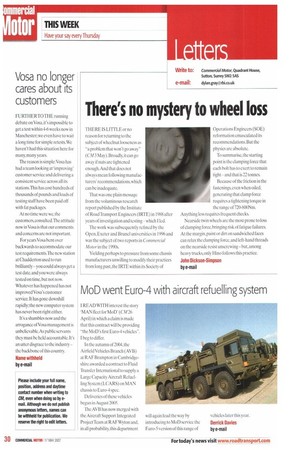There's no mystery to wheel loss
Page 30

If you've noticed an error in this article please click here to report it so we can fix it.
THERE IS LITTLE or no reason for returning to the subject of wheelnut looseness as "a problem that won't go away" (CM 3 May). Broadly, it can go away if nuts are tightened enough.And that does not always mean following manufacturers' recommendations, which can be inadequate.
That was one plain message from the voluminous research report published by the Institute of Road Transport Engineers (IRTE) in 1988 after years of investigation and testingwhich lied.
The work was subsequently relined by the Open. Exeter and Brunel universities in 1996 and was the subject of two reports in Commercial Motor in the 1990s.
Yielding perhaps to pressure from some chassis manufacturers unwilling to modify their practices from long past, the IRTE within its Society of Operations Engineers (SOE) reformation emasculated its recommendations. But the physics are absolute.
To summarise, the starting point is the clamping force that each bolt has to exert to remain tight and that is 22 tonnes.
Because of the friction in the fastenings, even when oiled, generating that clamp force requires a tightening torque in the range of 720-800Nm. Anything less requires frequent checks.
Nearside twin wheels are the most prone to loss of clamping force, bringing risk of fatigue failures. At the margin, paint or dirt on sandwiched faces can relax the clamping force, and left-hand threads on the nearside resist unscrewing but, among heavy trucks, only Hino follows this practice.
John Dickson-Simpson by e-mail






























































































































































































